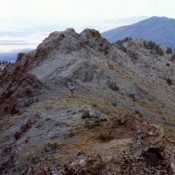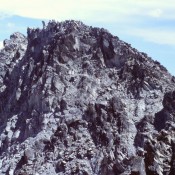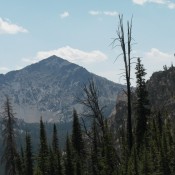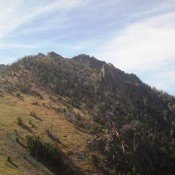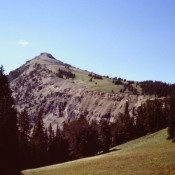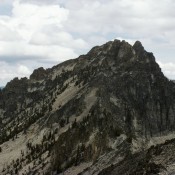
Climbing and access information for this peak is on Pages 129-130 of the book. This peak anchors the north end of the Tango Peaks. It has the Knapp triangulation station benchmark on its summit and has also gone by the name Knapp Benchmark as a result. A Class 3 route leads to the top but it is a long way … Continue reading
